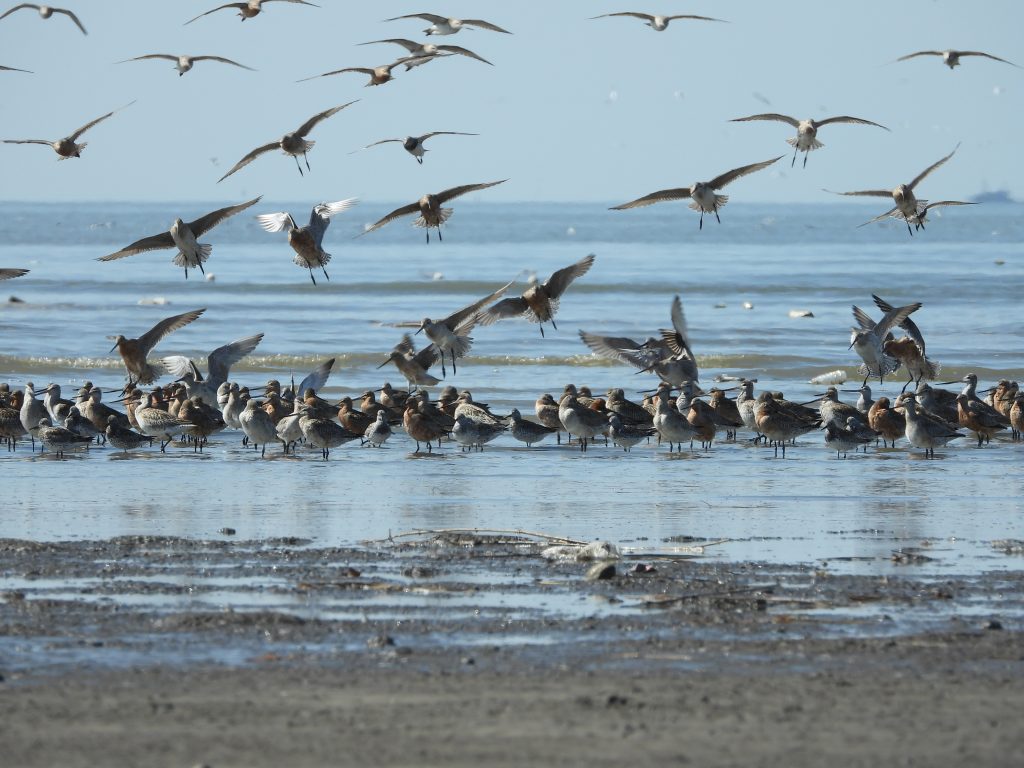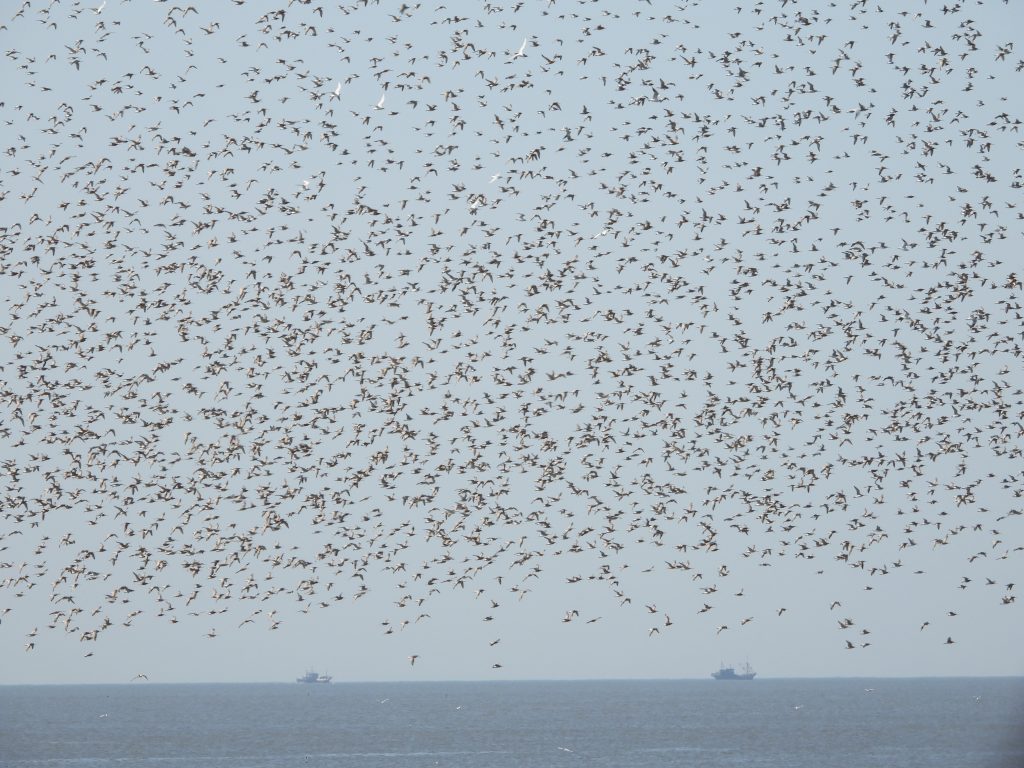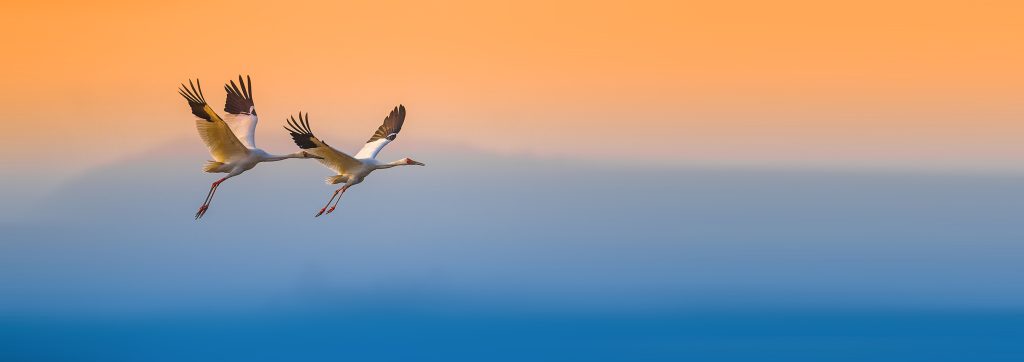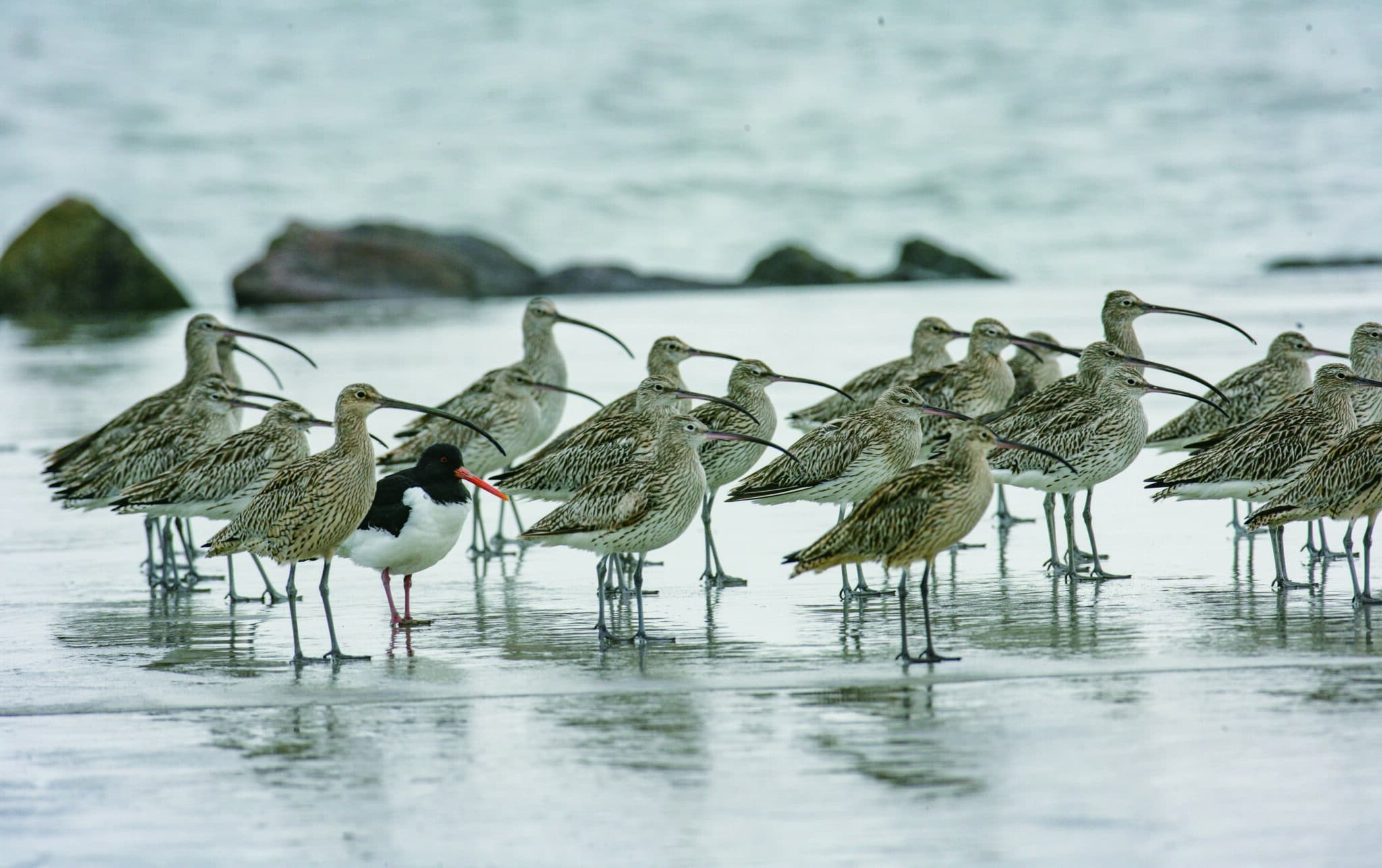New World Heritage sites in China help migratory birds

The UNESCO World Heritage Committee has designated 5 additional World Heritage sites along the coast of the Yellow Sea-Gulf of Bohai, helping migratory waterbirds across the continent.
Staring out towards the sea, a wall of shorebirds suddenly lifts up from the shallow muddy surface. Together, the birds move gracefully as a flock. There are few places elsewhere in East Asia that you can see this sheer number of migratory shorebirds gathered in one location. These are the newly designated UNESCO World Heritage migratory bird sanctuaries of the Yellow Sea-Gulf of Bohai in China.
Dr. Ding Li Yong, the Regional Flyways Coordinator in Asia recounts a recent trip to these very sites, “I was able to visit Dandong Yalu River Estuary a few years ago, and I was blown away by the huge congregations of migratory shorebirds swirling around the mudflats. I recall seeing around 50,000 Great Knots, easily!”
On 26 July, 2024, five of these extraordinary migratory bird sanctuaries were awarded the designation as UNESCO World Heritage Sites. This prestigious recognition showcases the critical importance of these wetland habitats for migratory birds in the East Asian-Australasian Flyway (EAAF).
Every spring and autumn, millions of birds migrate along the EAAF from the northern reaches of Russia, across the continent of Asia, all the way down to Australia and New Zealand. Birds such as the Critically Endangered Spoon-billed Sandpiper and Siberian Crane, and Endangered Far Eastern Curlew stop in these Yellow Sea wetlands to rest and fuel up for their long journeys.
Throughout the flyway, large wetland sites like these intertidal flats and salt marshes are quickly disappearing. Development and sea level rise squeeze the wetlands at both ends. This makes it difficult for birds to find food and rest throughout their journeys. These UNESCO designated sites along the Yellow Sea, will help ensure that species can safely make it to their destinations.
BirdLife International warmly welcomes the inscription of these sites for migratory waterbirds. Together with the Asian Development Bank and the East Asian-Australasian Flyway Partnership, BirdLife has been working to raise the profile for conservation management of these sites as key locations in the Regional Flyway Initiative (RFI). This Initiative aims to protect ecologically connected wetlands across the continent, that are important for birds and people, using innovative finance and conservation techniques.
Aside from feeding millions of migratory birds, the diverse wetlands around the Yellow Sea are extremely valuable to people. A 2023 Yellow Sea situation analysis, compiled with support from BirdLife International, highlights this value, ‘Tidal wetlands in the Yellow Sea are of immense value to human communities, providing billions of dollars per year in ecosystem services, including blue carbon sequestration, and buffering one of the most densely populated coastal areas in the world from the impacts of storms and sea-level rise.’
These five newly listed Migratory Bird Sanctuaries are the Phase II extension of the existing Yellow Sea-Gulf of Bohai (Phase I) World Heritage Sites that were listed in 2019. This continued effort showcases the commitment of the Chinese government to protecting important wetlands both for migratory birds, and the communities living around them.
BirdLife recognises this timely contribution to China’s long-term plans to protect its wetland ecosystems,
“The designation of 5 new World Heritage Sites is wonderful news for migratory birds as it will enhance both their profile and protection. More than that, these sites will help in the fight against climate change as the sites will lock of up more carbon, while also providing essential services for people. Congratulations to China, and all those that have worked so hard to secure these designations, reinforcing the importance of the Yellow Sea for the whole of the East Asian-Australasian Flyway.” – Martin Harper, CEO, BirdLife International

“The coastal wetlands of the Yellow Sea are at the heart of the East Asian-Australasian Flyway (EAAF). That is why it is such good news that China is continuing to move to protect the most important coastal wetlands for birds and for people. Although there is still much to do to secure the future of migratory shorebirds in the EAAF, this is a major step forward and will undoubtedly inspire others to follow suit. After all, the migratory birds using the Yellow Sea represent shared natural heritage and, with that, comes a shared responsibility to protect them and the places they need” – Terry Townshend, Fellow of the Paulson Institute and Member of the BirdLife International Global Advisory Group



